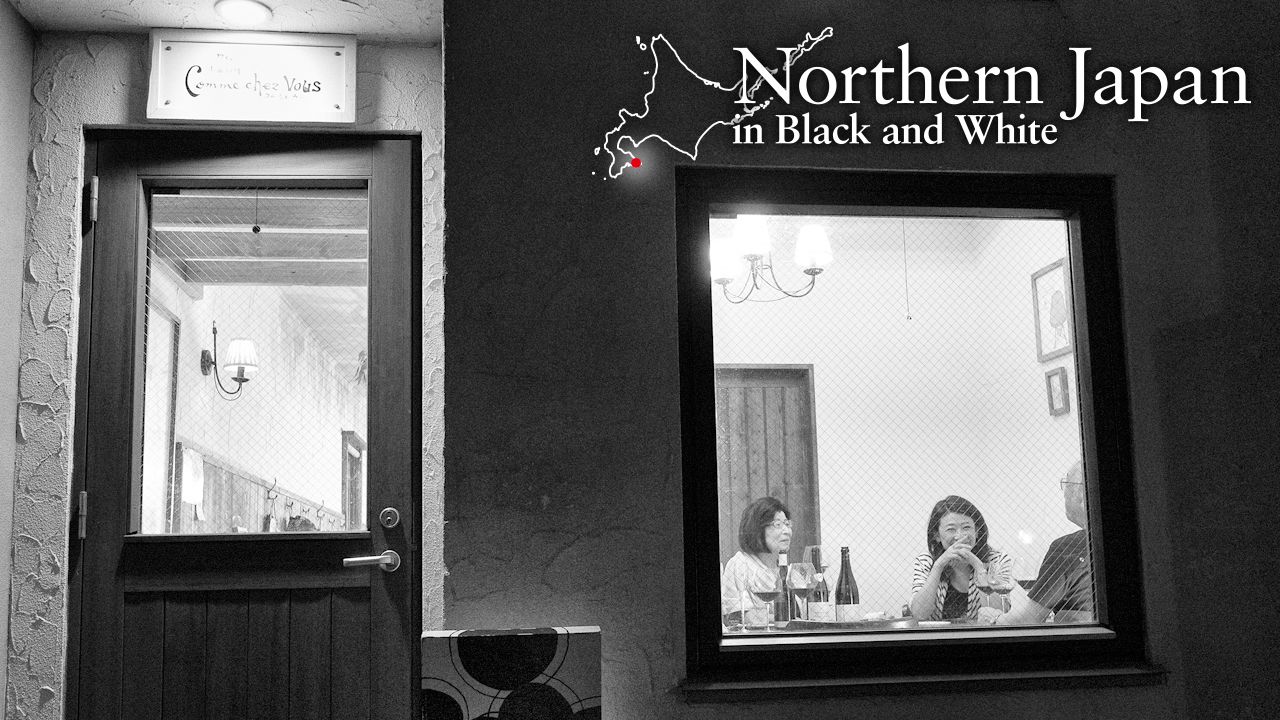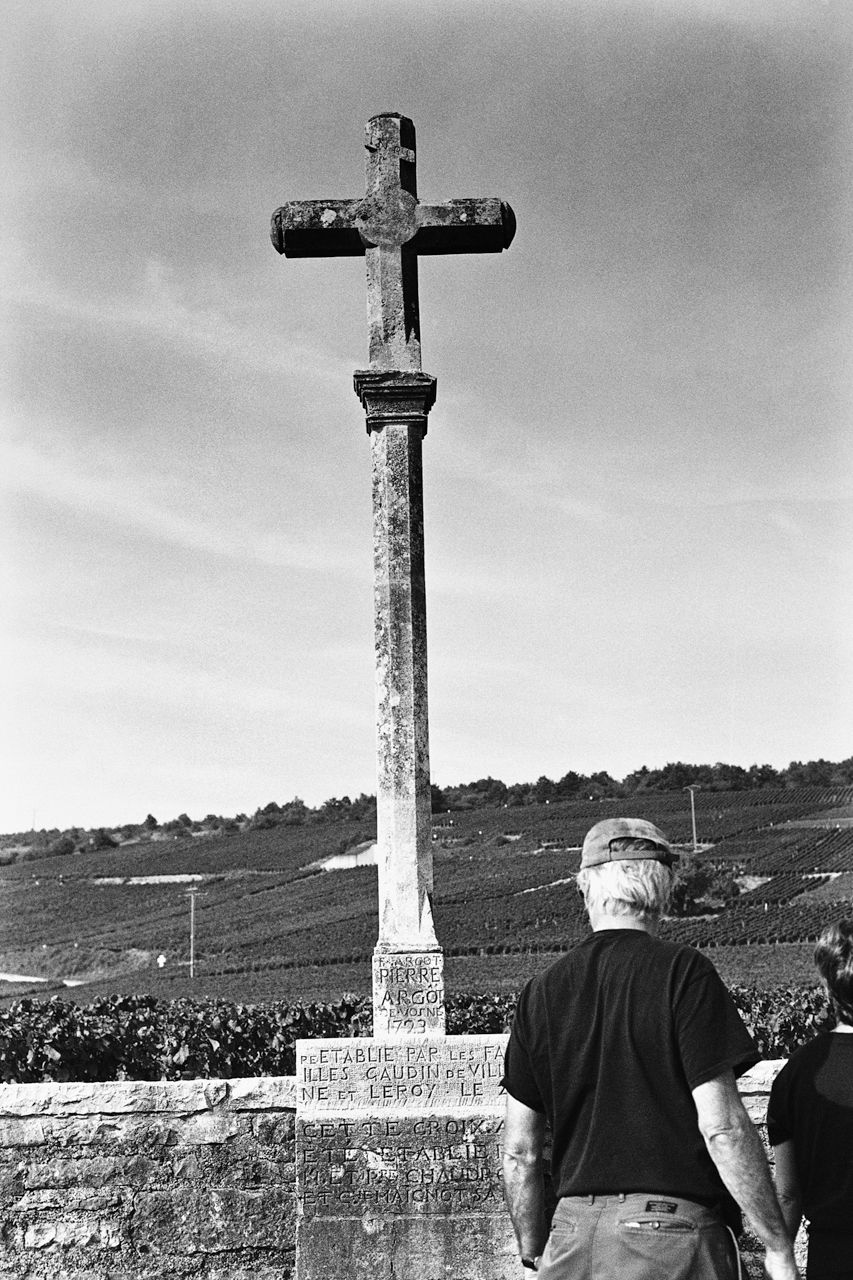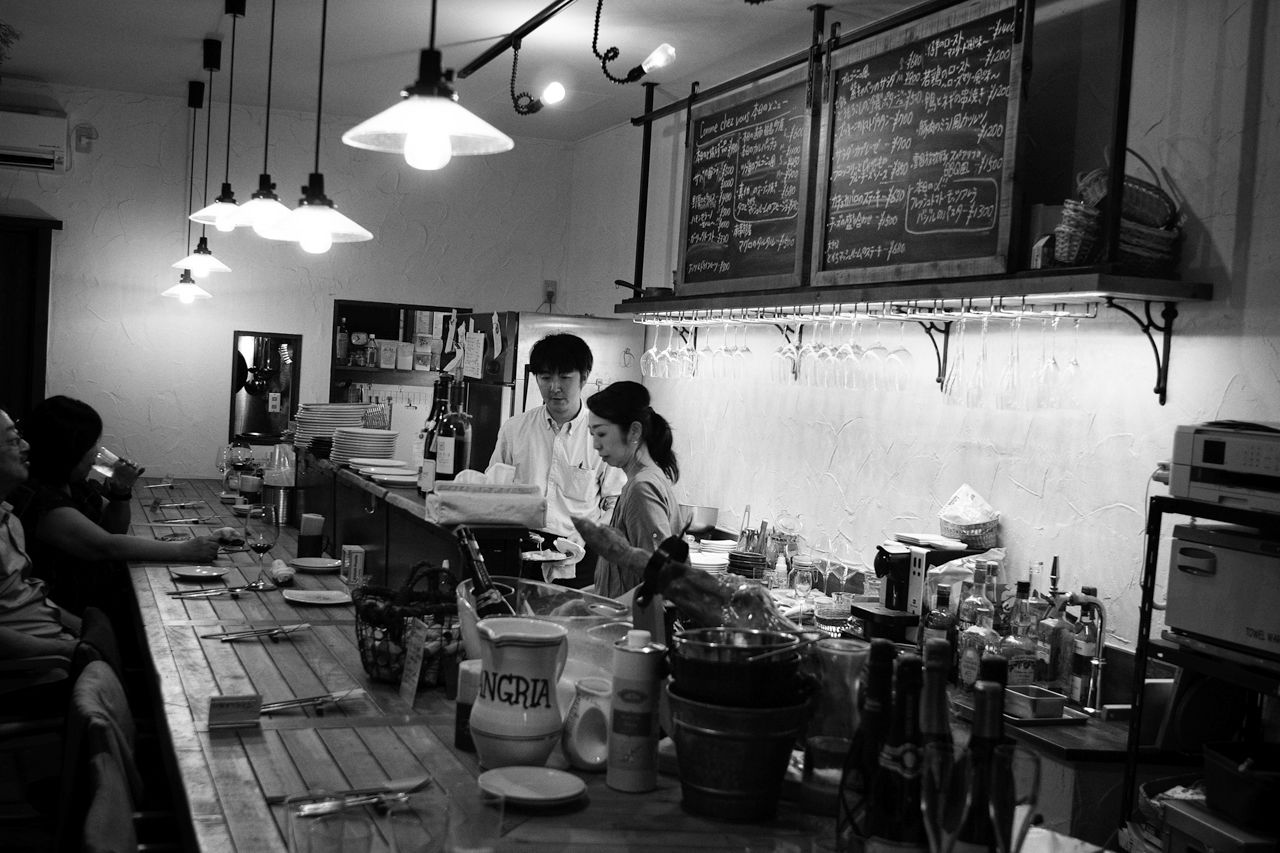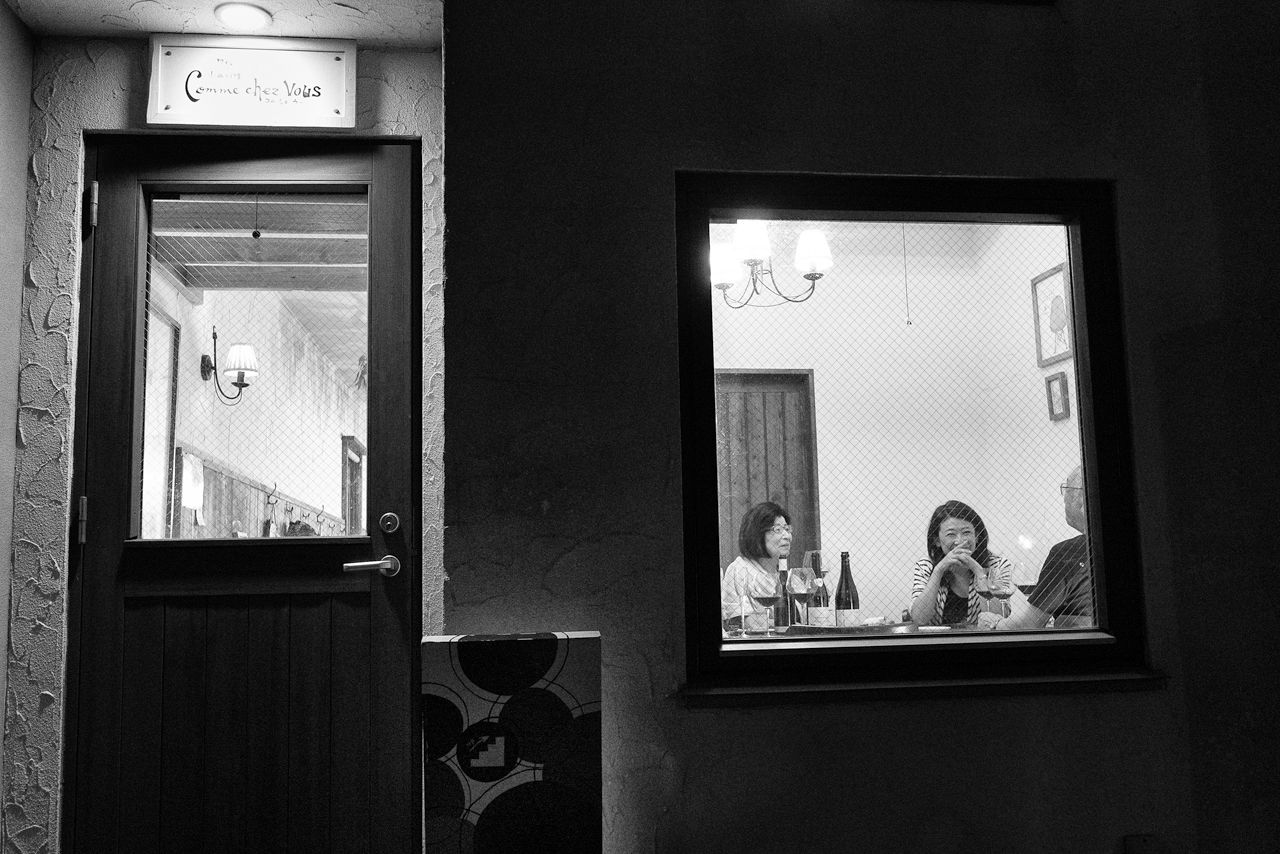
Make Yourself at Home: Comme Chez Vous
Guideto Japan
Travel- English
- 日本語
- 简体字
- 繁體字
- Français
- Español
- العربية
- Русский
At the foot of Mount Hakodate, in a stretch of Ginza Street where an air of Taisho Romanticism still lingers, stands the wine bar Comme Chez Vous. The name, meaning “as if you were at home” in French, invites patrons to sit back and take it easy. I visited the bar at its opening and have returned many times in the 10 years since.
Owner-chef Katō Shūichi was born in the fishing town of Fukushima, just south of Hakodate. Building on his experience working at a French restaurant in Kamakura in Kanagawa Prefecture, Katō prepares stylish kozara ryōri—literally “small-plate cuisine,” a spiritual cousin to tapas-style dining—deigned to go well with wine. This makes the bar something of an underground phenomenon, popular with oenophiles, young women, and others in the know.
Comme Chez Vous’s flounder carpaccio, made from fish caught in the chef’s home town, is the perfect accompaniment for a dry white. The eleven-vegetable potage is an utterly delicious combination of locally grown vegetables—not just healthy, but also good for the immune system. And potato-lovers of all stripes will thrill to the Tuscan-style fries.
My friends and I meet there sometimes for wine gatherings, bringing our own bottles to quaff with whatever the chef recommends. We decide on red or white in advance, but none of us is the self-satisfied sommelier type, so the places of origin, grades, and vintages we bring are all different. Sometimes a bottle from a famous winery is set against a rustic wine from a tiny village, which is always interesting. Sometimes the village wine comes out ahead.
Some 20 years ago, I visited Burgundy, France, where I roamed the vineyards and indulged in the fruit of their labor.

Vineyards of Romanée-Conti. (2000)
One day, in a cottage 10 minutes’ walk from the vineyards of Romanée-Conti, I compared two wines produced locally. One was a Richebourg, bottled six years previously, and the other was a village wine, a Vosne-Romanée aged 13 years. The Richebourg was too young, like a blossom still curled tight in its bud. The village wine was far more delicious, despite being slightly past its prime drinking moment. My encounter with this ¥3,000 vintage taught me to enjoy such hidden gems—inexpensive yet flavorsome wines that must be searched out from among the 4,000 wineries in Burgundy. Sometimes what one finds is not up to par, but at other times it brings unexpected delight.
There is a famous quotation about wine from author Kaikō Takeshi: “Every bottle of wine has two women inside it. The first is a virgin, when the cork has just been removed. The second is what she matures into afterward.” Will a given bottle, once opened, become a seasoned beauty, or a harsh old crone? The only way to tell is by drinking it.
Wine is a topic with endless depth. As a drinker, I can only hope for a longer life in which to explore it.
Comme Chez Vous
Getting there: A 3-minute walk from the Hōraichō stop on the Hakodate City Tram.
(Originally published in Japanese.)
tourism Hokkaidō Hakodate photography Northern Japan in Black and White

